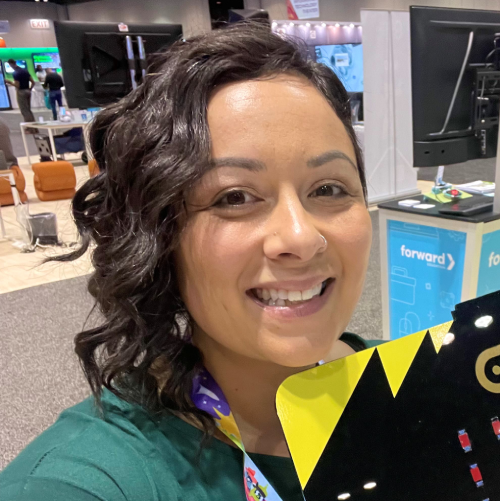Building Future-Ready Skills
Career and Technical Education (CTE) programs prepare students for high-demand careers by integrating academic knowledge with hands-on technical skills.
Incorporating STEM principles into CTE curricula enhances problem-solving abilities, technological literacy, and workforce readiness.
By merging STEM with CTE, schools can ensure students are equipped with both theoretical knowledge and practical experience, essential for thriving in today's job market.
Three Key Benefits of STEM in CTE
There are many reasons to implement STEM in College and Career Technical Education Departments but we've highlighted three primary reasons below including developing workforce-ready technical skills, bridging the gap between academics and industry, as well as enhancing problem-solving and innovation.
Main Reasons to Implement STEM:
Developing Workforce-Ready Technical Skills
What we know:
- STEM-infused CTE programs align with industry standards, providing students with hands-on experience in fields like engineering, healthcare, and information technology.
- Hands-on learning with technology fosters critical problem-solving and adaptability in real-world work environments.
- According to the National Alliance for Partnerships in Equity, CTE and STEM offer access to high-skill, high-wage, in-demand programs of study and pathways to carers with financial stability.
Bridging the Gap Between Academics and Industry
What we know:
- STEM integration in CTE programs connects students with real-world applications of science, technology, engineering, and math in career pathways.
- Industry partnerships provide students with internships, apprenticeships, and certification opportunities.
- Research indicates that students who participate in CTE-STEM programs are more likely to enter STEM-related degree programs.
Enhancing Problem-Solving and Innovation
What we know:
- STEM in CTE encourages students to apply technical skills to solve complex challenges through hands-on projects.
- Exposure to coding, robotics, and engineering design helps students develop innovation-driven mindsets.
- According to the ACTE, combining STEM with CTE enables students to master skills such as computational thinking which is required for many jobs.
STEM-Driven College and Career Technical Education Departments
Strawbees has collaborated with various districts to implement hands-on STEM learning in a variety of departments.
By using Strawbees tools in coding challenges and computational thinking exercises, schools have transformed traditional instruction and education into interactive learning experiences.


Copperas Cove ISD
Strawbees is implemented across multiple Libraries as well as Gifted and Talented and Makerspace programs in multiple schools and with varying grade levels in Copperas Cove Independent School District in Texas.
Hear from Holly Landez, Director of Digital Learning as well as Annababette Diemecke, Digital Learning Coordinator and Savannah Taylor, Librarian about how Strawbees is making an impact in their libraries.
What Educators Say
Here’s what teachers and administrators are saying about their experiences:
"(Strawbees) has versatility because it can be used in so many things. We have a summer STEM camp, Gifted and Talented, in a library, a regular classroom. I don't think it's pigeonholed to one level."

Holly Landez
Director of Digital Learning, Copperas Cove ISD
“Some other resources that are out there, they can be a little intimidating for computer science teachers. But when they see straws and connectors, they’re like, ‘I got this. I can do this’.”

Roberta Starling
Senior Supervisor of Computer Science in Pasco County Schools
"It’s accessible to everybody and engaging for everybody. I have students ranging from ESE to IEPs to gifted all in the same class and they’re all engaged when we’re using Strawbees.”

Patrina Conrow
STEM Teacher at Pasco County Schools
Strawbees Classroom
Strawbees Classroom includes a variety of lessons for different grade levels, including anything from building basic shapes to using micro:bit to code a plant that responds to light. Strawbees Classroom is free to sign up for and explore, whether you have Strawbees just yet or not. To explore the lessons and teacher resources, you can join today.

STEM in CTE
Finding funding for STEM and STEAM education can be challenging, but there are a range of grants and funding sources to support hands-on learning initiatives for CTE.
Many states offer grants to enhance STEM integration in CTE programs, funding new equipment, industry certifications, and teacher professional development.
Some useful resources include:
Several national organizations support STEM education in CTE departments by funding career pathway programs, industry-aligned training, and hands-on learning initiatives.
Examples of national-level grants include:
How We Can Help with Grant Applications
If you're looking for funding to bring hands-on STEAM learning to your students, we do have a grant writing webinar you can watch to help support you.
Next Steps
Integrating STEM into CTE programs empowers students with career-ready skills, bridging the gap between academic learning and industry demands.
By leveraging project-based learning, industry partnerships, and grant opportunities, educators can equip students for future success. At Strawbees, we support hands-on STEM education, making technical learning more engaging and impactful. Explore our STEM solutions to enhance your CTE program today!


